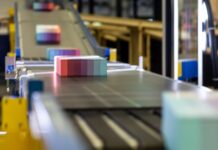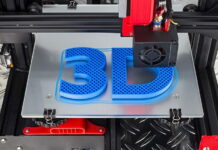In the swiftly changing realm of healthcare, sustainability has become a crucial focus, especially in industries that depend on plastic packaging. Every year, billions of pounds of healthcare plastics are produced, making the environmental impact of single-use plastics in the medical field significant. As the global community leans towards more eco-friendly practices, the medical device and pharmaceutical industries are under growing pressure to mitigate their environmental impact.
Meeting the Challenges
Understanding the urgency, medical device packaging manufacturers are intensifying their efforts to boost sustainability throughout their operations. This includes an increased focus on packaging design optimization, material selection, and waste reduction initiatives. By rethinking packaging solutions, these manufacturers aim to lessen environmental impact while maintaining the integrity and functionality of their products.
Adopting Advanced Techniques
A vital approach to achieving these sustainability goals is the use of simulation testing techniques. By utilizing advanced simulation technologies, such as in silico modeling, packaging engineers can assess the performance of various packaging designs without extensive physical prototyping. This method allows for quicker iteration and optimization, leading to more sustainable packaging solutions.
Simulation analysis provides a detailed understanding of packaging dynamics, including factors like material thickness, form factor, and failure points. Through virtual modeling, engineers can pinpoint opportunities for lightweight and material reduction, thereby cutting down the product’s environmental footprint. Additionally, simulation enables the exploration of alternative materials and design configurations, offering valuable insights into potential sustainability enhancements.
Reducing Waste
One significant application of simulation in medical device packaging is the optimization of thermoformed plastics. By digitally modeling packaging designs and conducting virtual evaluations, stakeholders can determine the feasibility of sustainable packaging solutions before committing to physical production. This approach not only speeds up the design process but also reduces resource consumption and waste generation linked to traditional trial-and-error methods.
Moreover, simulation allows for scenario testing and sensitivity analysis, enabling manufacturers to foresee and address potential issues before they occur. By simulating real-world conditions and stressors, engineers can refine packaging designs to ensure optimal performance and durability. This proactive method not only boosts sustainability but also enhances product reliability and customer satisfaction.
Simulation-based optimization extends beyond the design phase to cover the entire lifecycle of medical device packaging. By simulating transportation, storage, and end-of-life scenarios, manufacturers can find opportunities for further waste reduction and environmental stewardship. For instance, optimizing package dimensions and configurations can minimize storage space requirements and transportation emissions while also easing recycling and disposal processes.
Revolutionizing Sustainability Efforts
Ultimately, integrating simulation testing into the packaging design process signifies a paradigm shift in sustainability efforts within the medical device industry. By leveraging virtual modeling, manufacturers can achieve significant reductions in energy consumption, waste, and environmental impact. Simulation empowers stakeholders to make informed decisions based on quantifiable data, ensuring that sustainability goals are met without sacrificing product quality or safety.
Summary
In conclusion, incorporating simulation testing is set to revolutionize how medical device packaging is designed and optimized for sustainability. By adopting innovative technologies and methodologies, manufacturers can lead the way toward a more environmentally friendly future, providing high-performance packaging solutions that cater to the changing needs of healthcare providers as well as patients.
As sustainability continues to dominate the medical industry, simulation offers a powerful tool for driving positive change and creating a more sustainable tomorrow. With ongoing investment in simulation-based research and development, the medical device packaging sector can spearhead the movement towards a more sustainable future for healthcare globally. The adoption of simulation testing signifies not only a commitment to environmental stewardship but also a strategic investment in long-term competitiveness and resilience in an increasingly sustainability-focused marketplace.




























